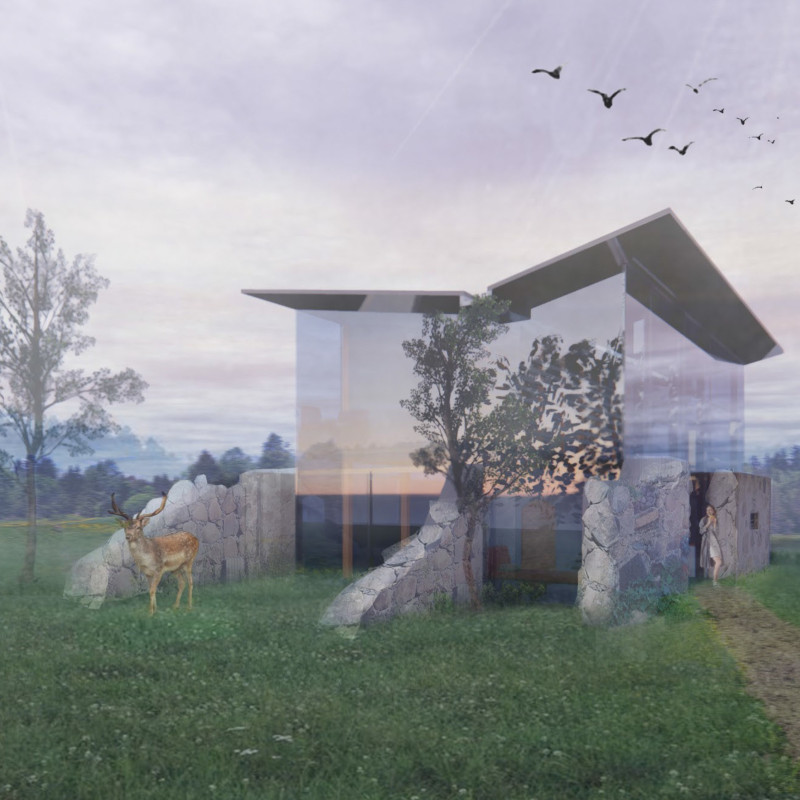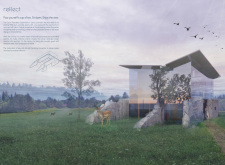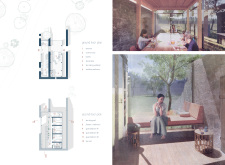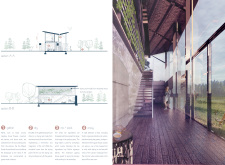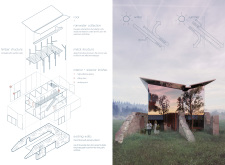5 key facts about this project
The Ozolini Teamakers Guest House is located in Latvia, harmoniously integrated within the structure of an 1850s barn. It serves as a tea oasis that encourages visitors to connect with nature while participating in the local tea-making culture. The design focuses on fostering a relationship between the building and the surrounding landscape, enhancing the overall experience for guests.
Architecture Concept
The guest house prioritizes immersion in the natural environment, allowing guests to gather local plants such as black currant, meadow clover flowers, mountain ash berries, and lemon balm. This gathering area promotes a hands-on approach to understanding local flora and supports the idea that tea-making is as much about appreciation of the environment as it is about the beverage itself.
Materiality and Sustainability
A distinctive feature of the building is the use of reclaimed wood for the drying rack, which comes from the original barn. This sustainable choice not only respects the history of the site but also highlights an eco-friendly approach to design. The extensive glazing throughout the guest house fills the interior with natural light and creates ongoing visibility between inside and outside, allowing guests to feel connected to the landscape.
Functional Areas
The layout includes specific areas designed for the tea-making process. A large table is allocated for blending workshops, enabling guests to collaborate and learn from one another. This arrangement encourages interaction with the craft while also allowing participants to take in the exterior views, enriching their experience. The common area is designed to promote social engagement, where guests can sample a range of teas, including blends they have created during their stay.
Rainwater Collection System
An innovative aspect of the design is the roof, which is designed to capture rainwater. The collected water is stored for use in the kitchen and washrooms, helping to minimize the ecological footprint of the building. This sustainable feature aligns with the overall theme of environmental awareness, merging modern functionality with a commitment to responsible resource use.
Outside the main building, a wooden bench extends from the interior to the exterior, providing a place for guests to relax and take in the natural surroundings. This detail emphasizes the connection between the indoor and outdoor environments, inviting visitors to enjoy the beauty of the landscape.


